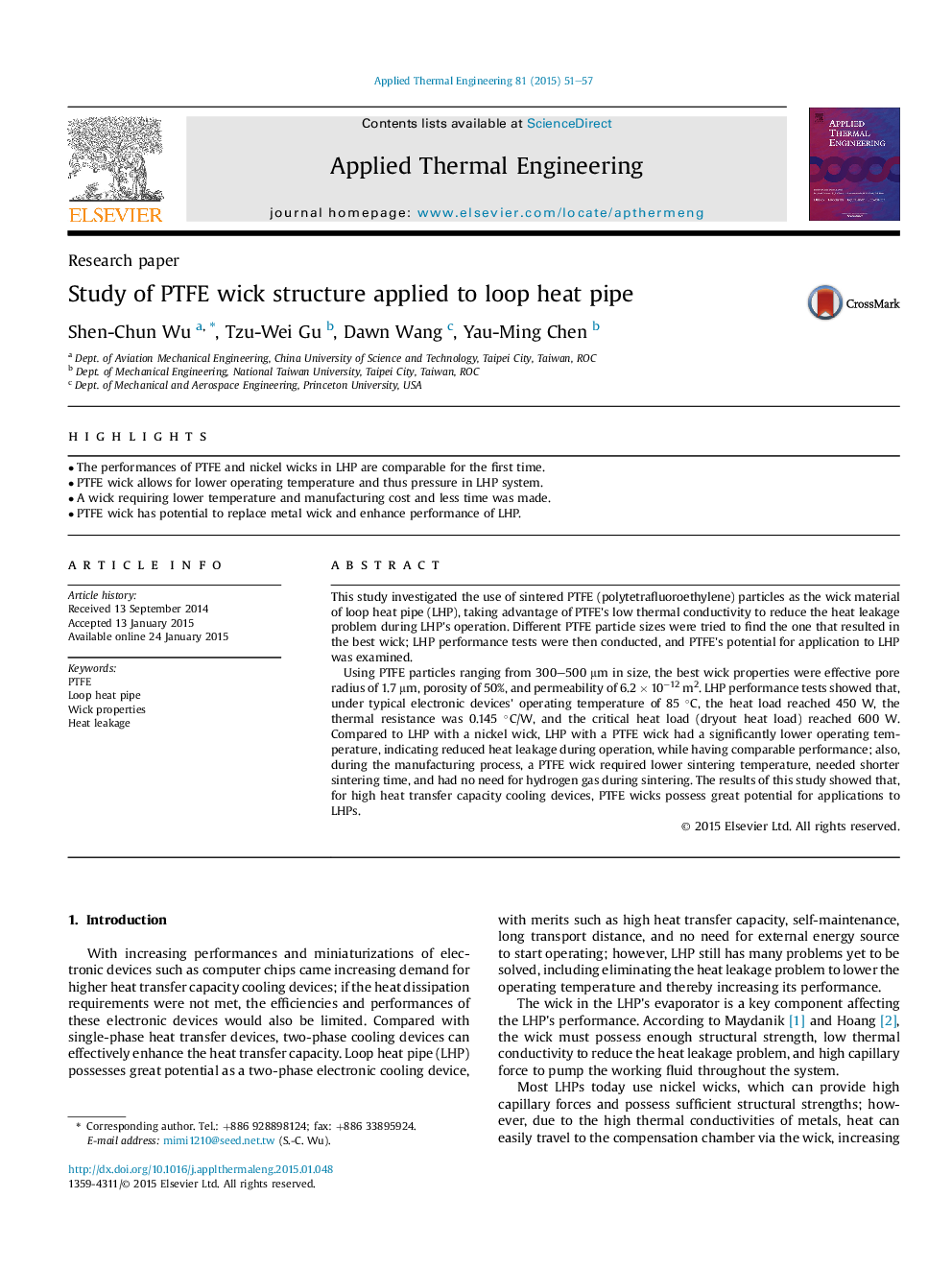| Article ID | Journal | Published Year | Pages | File Type |
|---|---|---|---|---|
| 645602 | Applied Thermal Engineering | 2015 | 7 Pages |
•The performances of PTFE and nickel wicks in LHP are comparable for the first time.•PTFE wick allows for lower operating temperature and thus pressure in LHP system.•A wick requiring lower temperature and manufacturing cost and less time was made.•PTFE wick has potential to replace metal wick and enhance performance of LHP.
This study investigated the use of sintered PTFE (polytetrafluoroethylene) particles as the wick material of loop heat pipe (LHP), taking advantage of PTFE's low thermal conductivity to reduce the heat leakage problem during LHP's operation. Different PTFE particle sizes were tried to find the one that resulted in the best wick; LHP performance tests were then conducted, and PTFE's potential for application to LHP was examined.Using PTFE particles ranging from 300–500 μm in size, the best wick properties were effective pore radius of 1.7 μm, porosity of 50%, and permeability of 6.2 × 10−12 m2. LHP performance tests showed that, under typical electronic devices' operating temperature of 85 °C, the heat load reached 450 W, the thermal resistance was 0.145 °C/W, and the critical heat load (dryout heat load) reached 600 W. Compared to LHP with a nickel wick, LHP with a PTFE wick had a significantly lower operating temperature, indicating reduced heat leakage during operation, while having comparable performance; also, during the manufacturing process, a PTFE wick required lower sintering temperature, needed shorter sintering time, and had no need for hydrogen gas during sintering. The results of this study showed that, for high heat transfer capacity cooling devices, PTFE wicks possess great potential for applications to LHPs.
